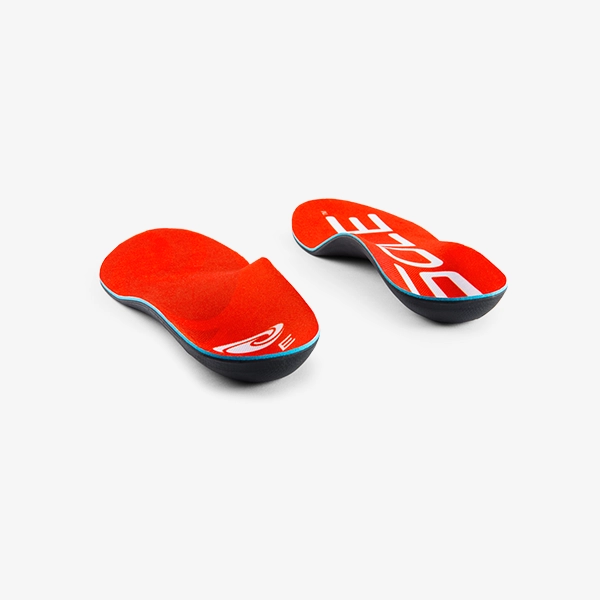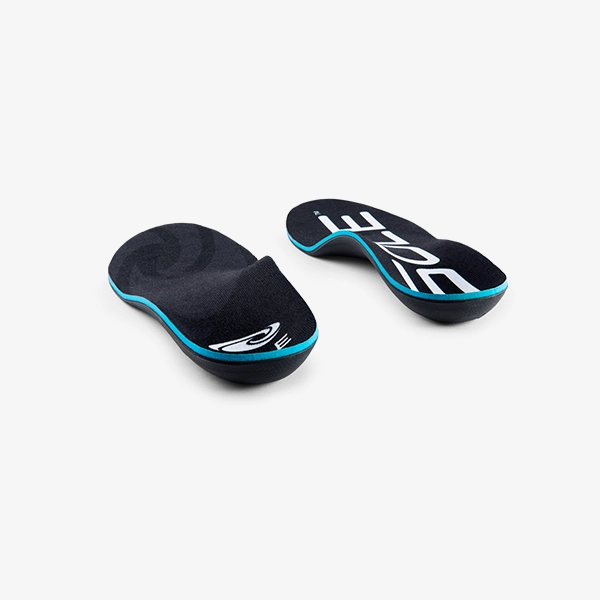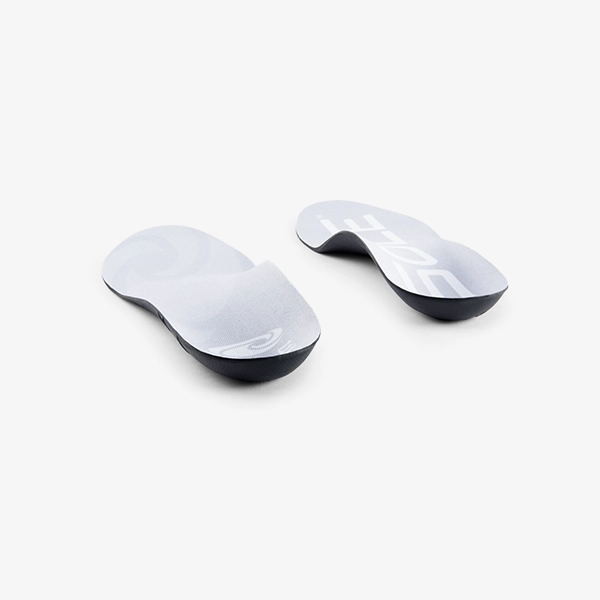Posterior tibial tendonitis (also spelled tendinitis) can be a frustrating and painful condition to deal with, but the right supportive insoles can offer relief and help you heal. If your condition has progressed to posterior tibial tendon dysfunction (PTTD), supportive insoles can help you walk pain-free and protect your joints from excess strain.
But what should you be looking for in a good pair of insoles for posterior tibial tendonitis?
In this post we’ll describe the essential elements of effective orthotics for posterior tibial tendonitis, and why SOLE footbeds are the best option for you.


Where does posterior tibial tendonitis hurt?
To understand what makes a good pair of insoles for posterior tibial tendonitis, it’s first important to understand the condition. Put simply, this condition describes inflammation in your posterior tibial tendon.
The posterior tibial tendon is attached to the tibialis posterior, the most important stabilizing muscle in your lower leg. The tendon runs from the back of your ankle, behind the protruding bone on the inside of your ankle, and down into your arch. Inflammation in the tendon can hurt anywhere on the inside of the ankle and into the arch.
(For pain on the outside of your ankle, see peroneal tendonitis).
Posterior tibial tendonitis can be caused by a sudden injury, like rolling an ankle. It can also be the result of a lot of repetitive strain on the tendon. Biomecahnical inefficiencies like overpronation, where your ankle rolls inward excessively, can place excess strain on your tendons, making you more prone to posterior tibial tendonitis.
SOLE footbeds for posterior tibial tendonitis come in three thicknesses
How can insoles help posterior tibial tendonitis?
A good pair of insoles for posterior tibial tendonitis will help to reduce strain on your posterior tibial tendon, preventing further aggravation and allowing time for the tendon to heal. The best way to do this is to ensure your foot and ankle are moving efficiently, with stability and neutral alignment.
Two essential elements to providing this stability and neutral alignment are adequate arch support, and a deep heel cup.


Posterior tibial tendonitis arch support insoles.
SOLE footbeds all feature the SOLE Signature Supportive Shape with arch support that’s clinically proven to reduce strain in the feet by an average of 34%. By supporting the arch from beneath, you directly lighten the workload of the posterior tibial tendon, which works to support the arch of the foot.
Proper arch support is also a key factor in promoting neutral alignment in the foot and ankle. This neutral alignment adds stability, reducing the load on the stabilizing muscles like the tibialis posterior. This helps to lighten the load on the posterior tibial tendon.
Neutral alignment is best achieved when arch support is combined with a deep heel cup. The deep heel cup of a SOLE footbed prevents excessive movement or rotation of the heel, ensuring you’re walking on a neutral, stable base. This corrects issues like overpronation that can lead to excess strain on your tendons.


Custom moldable orthotics for posterior tibial tendonitis.
The best insoles for posterior tibial tendonitis will offer you customized comfort to ensure your feet are getting the right support in just the right places. Prescription orthotics are one option for this orthotic support, but they cost hundreds of dollars.
SOLE footbeds offer orthotic-grade support at an affordable price. They also custom mold to your unique feet and arch height. Just slip your SOLE footbeds into your shoes, and they’ll wear mold in a couple of days of wear. You also have the option of heat molding your SOLE footbeds in your oven at home, to get customized comfort in a matter of minutes.
Once molded to your feet, SOLE footbeds provide an even more stable base for you talk walk and live free from the pain of posterior tibial tendonitis.
The Best Insoles for Posterior Tibial Tendon Dysfunction.
Posterior Tibial Tendon Dysfunction (PTTD) occurs when the posterior tibial tendon breaks down to the point of no longer performing its supportive role in your arch. This leads to what is commonly called ‘collapsed arches’ or ‘fallen arches’.
If you have flat feet from collapsed arches, the way your foot carries your weight changes, often resulting in your ankle rolling inward. This can lead to various issues within your feet and ankles, and beyond into your knees, hips and back.
Good insoles for PTTD will perform the same function as insoles for regular posterior tibial tendonitis. They will support the arch to re-establish a natural arch shape in your foot. This will help provide neutral alignment in your ankles and beyond, so your body can move efficiently, on a stable base.
SOLE footbeds are particularly effective for people with PTTD as they allow you to custom mold the insoles to provide a comfortable level of support for your foot. If you have PTTD we recommend heat molding the footbeds before wearing them. You can even repeat the heat molding process up to five times if necessary, to get a comfortable level of support.
How to treat posterior tibial tendonitis.
In order to achieve a long term solution to posterior tibial tendonitis, it’s important to strengthen the stabilizing muscles in your calves. This can be achieved through simple exercises like calf raises.
A SOLE footbed can help a huge amount to allow your tendon to heal in the short term, by reducing strain on the tendon.


Posterior tibial tendonitis vs plantar fasciitis.
Posterior tibial tendonitis and plantar fasciitis can both lead to pain in the arch of the foot. So how do you know if you’re suffering from one or the other? In order to get an accurate diagnosis, it’s best to seek advice from your doctor, but there are certain tells that might help you make an informed guess.
Plantar fasciitis tends to hurt closer to the heel, toward the back of the arch. It’s also often worst first thing in the morning or after periods of rest, when the plantar fascia ligament has contracted.
Posterior tibial tendonitis is more likely to hurt higher up the arch, closer to the ankle. It’s also more likely to make it harder to stand on your toes comfortably, and harder to point your toes inward.
The good news is that whichever affliction you might be dealing with, SOLE footbeds are an excellent option to reduce strain in your foot and relieve your pain.


Which insole for posterior tibial tendonitis?
All SOLE footbeds feature the same Signature Supportive Shape, that’s guaranteed to offer you relief from your pain. If you don’t find relief within 90 days, you simply return the footbeds for a refund.
That means to decide which footbeds to buy, you just need to choose the footbed that will fit best in your shoe. Our footbeds come in Thin, Medium and Thick, with various amounts of cushioning to fit everything from your slim-fitting dress shoes to your loose-fitting boots.



